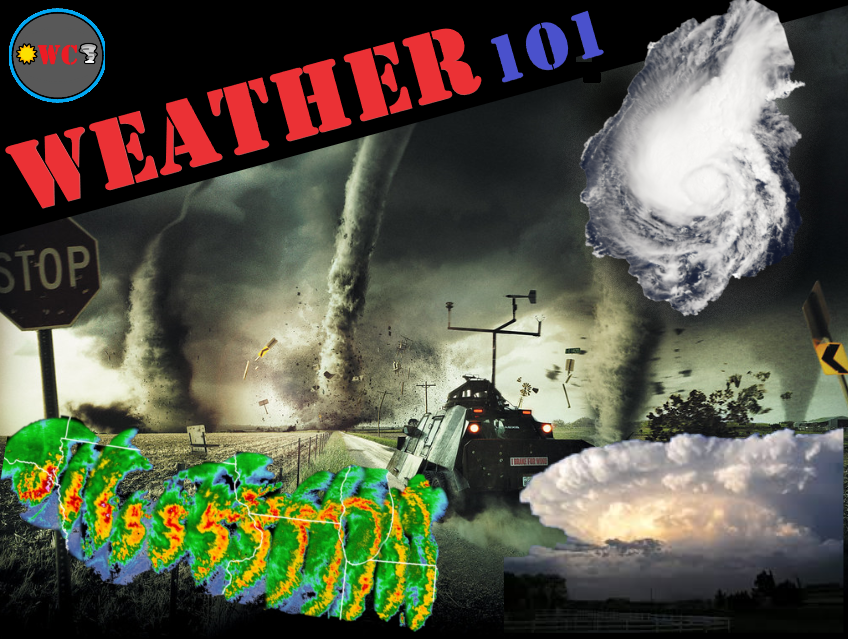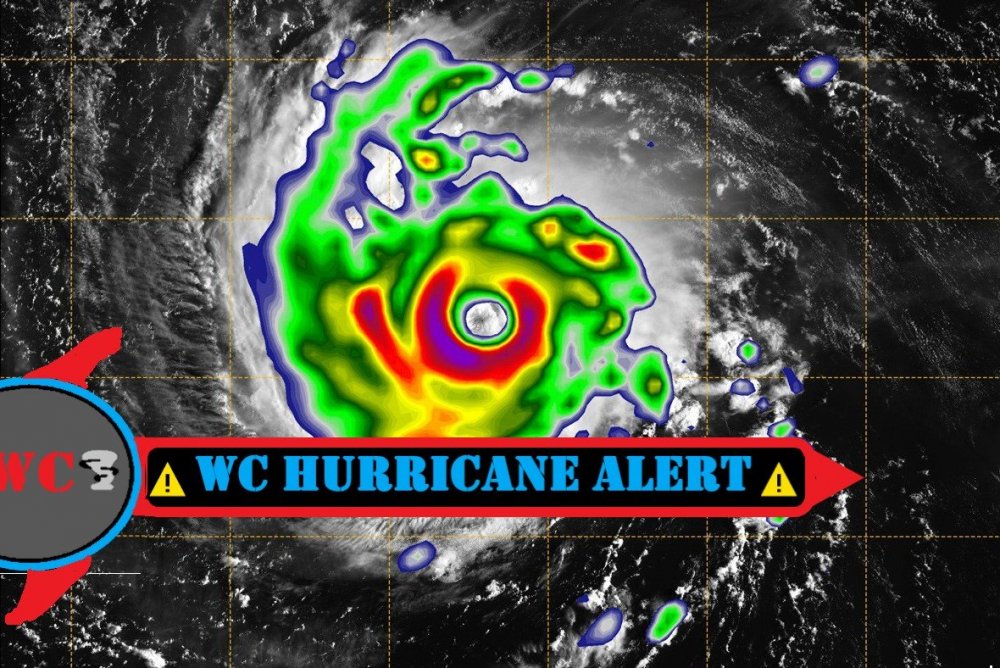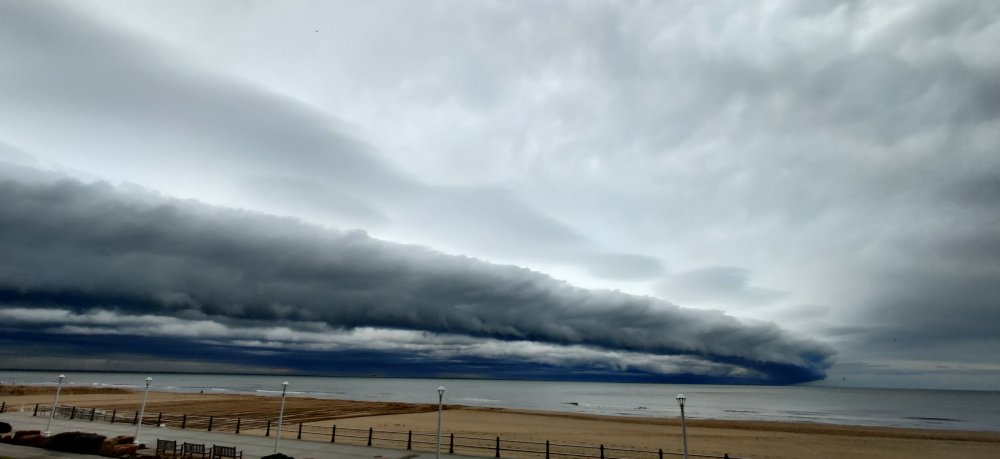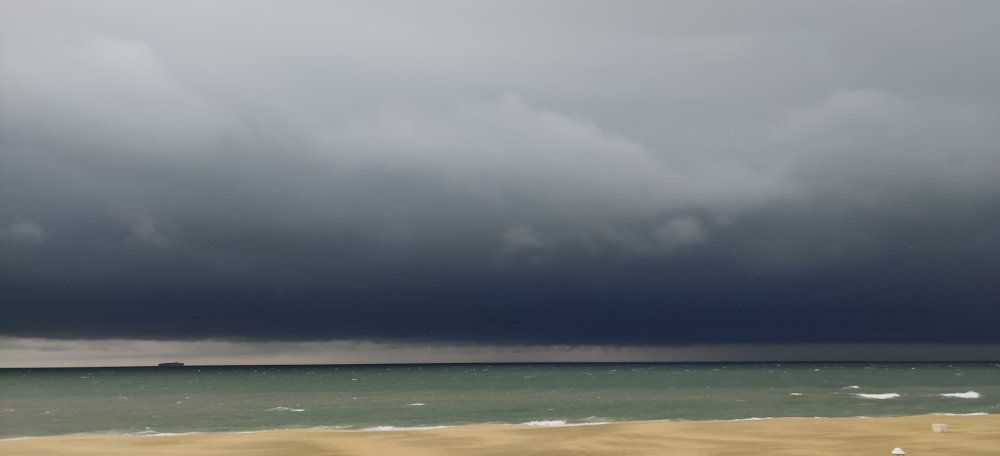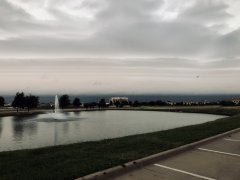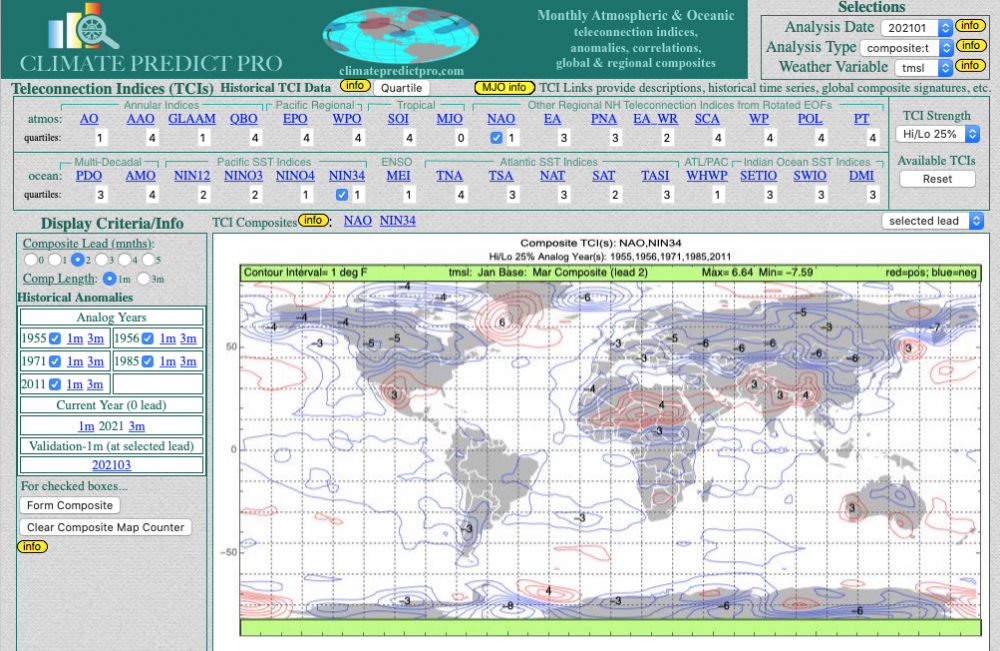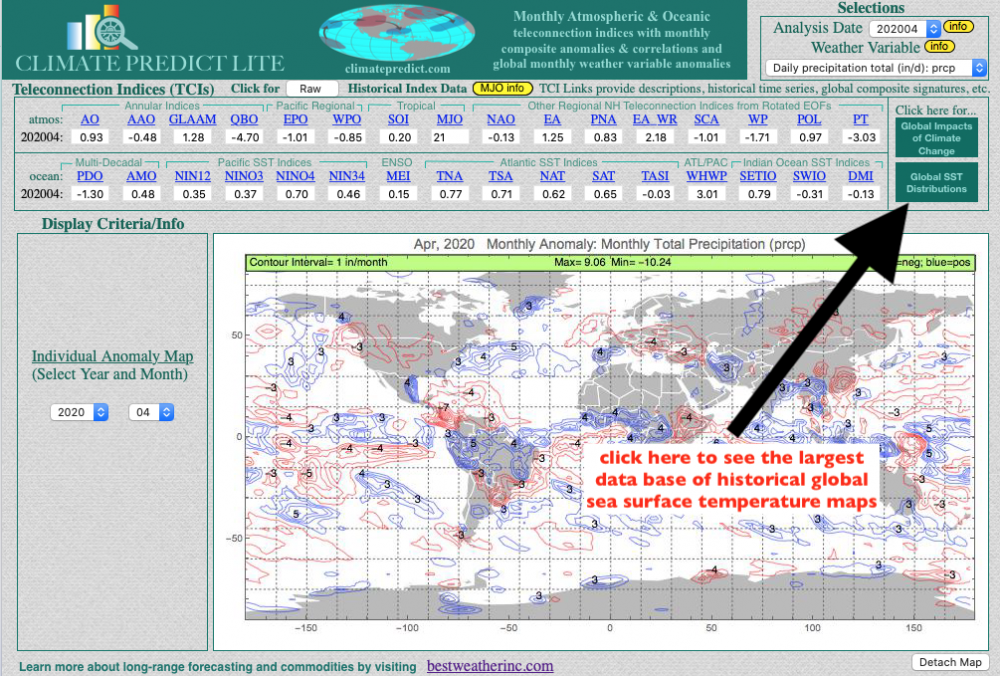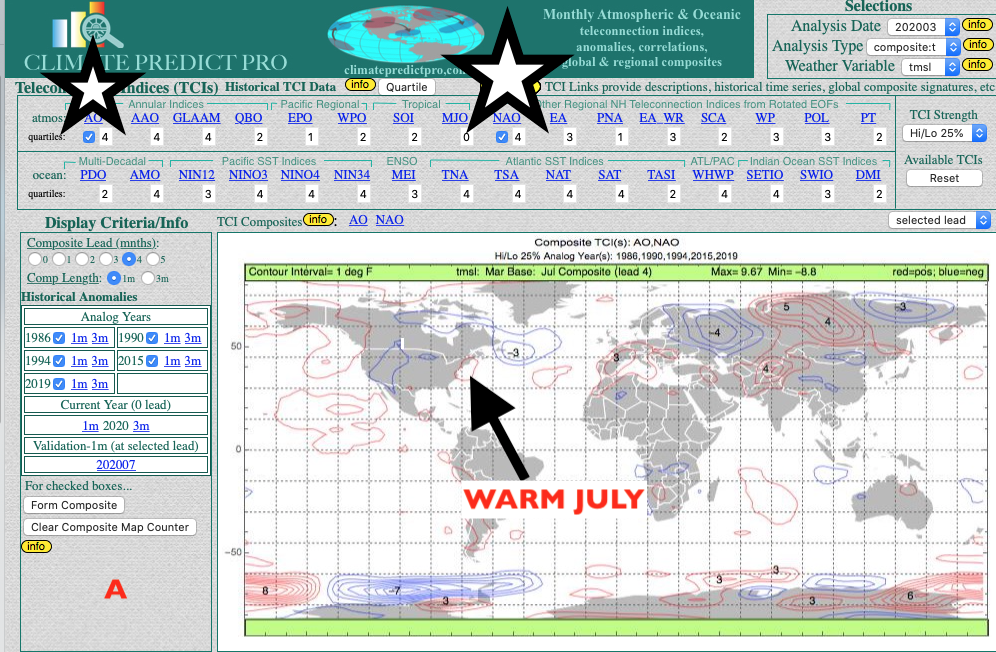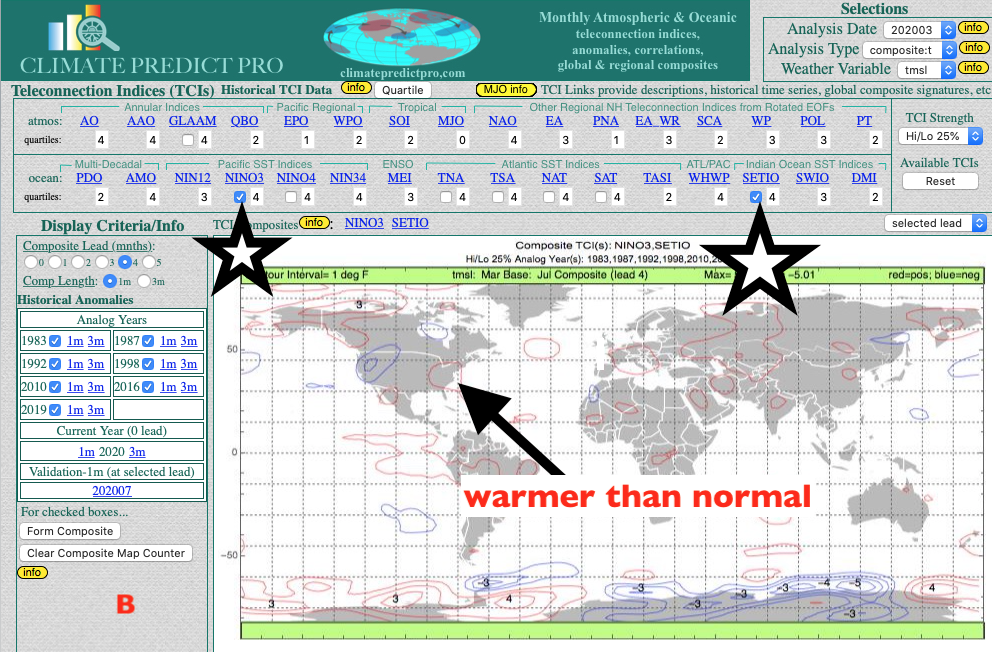Search the Community
Showing results for tags 'Weather'.
-
Meteorological fall is here everyone. Enjoy the last few weeks of nice weather before it starts cooling down. How was your summer?
-
https://youtu.be/PJbzs5Bo8D4 Climate change is the defining crisis of our time and it is happening even more quickly than we feared. But we are far from powerless in the face of this global threat. The climate emergency is a race we are losing, but it is a race we can win. No corner of the globe is immune from the devastating consequences of climate change. Rising temperatures are fueling environmental degradation, natural disasters, weather extremes, food and water insecurity, economic disruption, conflict, and terrorism. Sea levels are rising, the Arctic is melting, coral reefs are dying, oceans are acidifying, and forests are burning. It is clear that business as usual is not good enough. As the infinite cost of climate change reaches irreversible highs, now is the time for bold collective action. Disasters linked to climate and weather extremes have always been part of our Earth’s system. But they are becoming more frequent and intense as the world warms. No continent is left untouched, with heatwaves, droughts, typhoons, and hurricanes causing mass destruction around the world. 90 per cent of disasters are now classed as weather- and climate-related, costing the world economy 520 billion USD each year, while 26 million people are pushed into poverty as a result. Billions of tons of CO2 are released into the atmosphere every year as a result of coal, oil, and gas production. Human activity is producing greenhouse gas emissions at a record high, with no signs of slowing down. According to a ten-year summary of UNEP Emission Gap reports, we are on track to maintain a “business as usual” trajectory. The last four years were the four hottest on record. According to a September 2019 World Meteorological Organization (WMO) report, we are at least one degree Celsius above preindustrial levels and close to what scientists warn would be “an unacceptable risk”. The 2015 Paris Agreement on climate change calls for holding eventual warming “well below” two degrees Celsius, and for the pursuit of efforts to limit the increase even further, to 1.5 degrees. But if we don’t slow global emissions, temperatures could rise to above three degrees Celsius by 2100, causing further irreversible damage to our ecosystems. Glaciers and ice sheets in polar and mountain regions are already melting faster than ever, causing sea levels to rise. Almost two-thirds of the world’s cities with populations of over five million are located in areas at risk of sea level rise and almost 40 per cent of the world’s population live within 100 km of a coast. If no action is taken, entire districts of New York, Shanghai, Abu Dhabi, Osaka, Rio de Janeiro, and many other cities could find themselves underwater within our lifetimes, displacing millions of people. While science tells us that climate change is irrefutable, it also tells us that it is not too late to stem the tide. This will require fundamental transformations in all aspects of society — how we grow food, use land, transport goods, and power our economies. While technology has contributed to climate change, new and efficient technologies can help us reduce net emissions and create a cleaner world. Readily-available technological solutions already exist for more than 70 per cent of today’s emissions. In many places renewable energy is now the cheapest energy source and electric cars are poised to become mainstream. In the meantime, nature-based solutions provide ‘breathing room’ while we tackle the decarbonization of our economy. These solutions allow us to mitigate a portion of our carbon footprint while also supporting vital ecosystem services, biodiversity, access to fresh water, improved livelihoods, healthy diets, and food security. Nature-based solutions include improved agricultural practices, land restoration, conservation, and the greening of food supply chains. Scalable new technologies and nature-based solutions will enable us all to leapfrog to a cleaner, more resilient world. If governments, businesses, civil society, youth, and academia work together, we can create a green future where suffering is diminished, justice is upheld, and harmony is restored between people and planet.
- 9 replies
-
- 3
-

-

-

-
- climatechange
- climatecrisis
-
(and 3 more)
Tagged with:
-
Texas Weather Center recently updated and released more on its Weather 101 page! Here you guys can see tons of stuff like Meteorology 101, types of weather, etc! This page is a work in progress... Like what you see on WC? Please register for free, we'd love to have you! Plus you get bonus material and perks when you register! https://www.weathercentertx.com/weather-101-different-types-of-weather/ Texas Weather Center
-
- weather 101
- weather
-
(and 3 more)
Tagged with:
-
Here you can track hurricanes from Texas Weather Center's website! We just updated our hurricane page! Weather Center – Know the Weather | Learn the Weather HURRICANE CENTER PAGE: https://www.weathercentertx.com/us-hurricane-center/
-
- hurricanes
- texas weather
-
(and 4 more)
Tagged with:
-
- 3 replies
-
- 2
-

-
- weather
- weather news
-
(and 2 more)
Tagged with:
-
-
- weather
- shelf cloud
-
(and 2 more)
Tagged with:
-
This report talks a bit more about the natural gas market and how you can use weather to make money trading. My newsletter Climatelligence for just $13/month is a far cry from the thousands of a month that clients pay to learn how to trade commodities. https://www.bestweatherinc.com/commodities/how-we-predicted-the-arctic-pig-for-february-setting-the-energy-markets-on-fire/
-
- trading
- natural gas
-
(and 4 more)
Tagged with:
-
https://www.ametsoc.org/ams/index.cfm/education-careers/education-program/weather-resources/
-
AW Widget app for Android The official Ambient WEather app doesn't support Widgets so here my version: http://dtvrc.com/2020/10/20/ambient-weather-android-widget-app-companion/ For any discussion or suggestion feel free to join me: https://t.me/awwidget https://discord.com/invite/pCTzZZN
-
I have had a bunch of requests to make available historical global ocean temperatures so you can compare various El Nino, La Nina events and much more to any year of your choice. Now you can access everything you need for FREE here CLIMATE PREDICT including all hurricane tracks, snow cover maps and much more back to 1958
-
For those who were disappointed in a pretty much "snowless" eastern winter, there is a high correlation in predicting July temperature trends for the eastern U.S, when looking solely at historical teleconnections. Here are just two methods, of many that you can learn to use for FREE. One can also use these analog years to make some predictions of the hurricane season. If you email I would gladly show you. 1) +AO/NAO winters, we look at historical analogs months in advance. The result of this composite on ClimatePredict is for a hot July. 2) The lingering weak El Nino signal and warm oceans over the Indian Ocean 3)The +AMO and warm Atlantic Having reliable long range forecast models that can out predict the Euro and GFS are critical for commodity traders, farmers, insurance companies and more Jim Roemer www.bestweatherinc.com
-
- summer
- climatepredict
-
(and 4 more)
Tagged with:
-
Thought I would kick off the fall season banter thread. Definitely noticing leaves changing, especially along creeks and rivers. Seeing sycamores, maples, and honey locust beginning to change. Some of this is due to heat stress for sure, but definitely getting to be about the time that leaves begin to turn due to the days getting shorter. Last year it took forever for the leaves to drop. I suspect they are off the trees much earlier this year...that is not saying much since last year I only had about eight weeks between the end of leaf season and the beginning of mowing season.
- 295 replies
-
- 2
-

-
Looking into getting a home weather station. I would like to have solar power too. thanks for any ideas.
- 3 replies
-
- weather station
- home
-
(and 2 more)
Tagged with:
-
Going to begin the banter thread with some quotes.... "Historically, consensus has been the first refuge of scoundrels; it is a way to avoid debate by claiming that the matter is already settled." Michael Crichton "If you want to go fast, go alone. If you want to go far, go as a team." John Wooden "Offense sells tickets. Defense wins games. Rebounds win championships." Pat Summitt "Baseball is 90% physical and the other half is mental." Yogi Berra "Life for me ain't been not crystal stair." Langston Hughes. When we finally tie this thread up in a bow, we will likely be able to see the first cold front of fall on LR models....
- 116 replies
-
- 3
-

-
- banter
- chewing the fat
- (and 5 more)
-
I am thinking we can probably squeeze in a gtg before full-on summer hits and people head out to bask in the HHH wearing banana hammocks, wife beaters, flip flops, straw hats, and buckets of lotion, all while dragging their knuckles and coolers full of brews to the local beach or park.
-
"We live at the bottom of an ocean of the air element, which, through an unquestionable experience, is shown to have weight." These words were pronounced by the Italian physicist and mathematician evangelist Torricelli, after the manufacture of the first barometer in the 17th century. Evangelist Torricelli experimented with layered glass tubes and various liquids of different densities until he used Mercury, with which he managed to balance atmospheric pressure. Torricelli's experiment reached a great popularity, but it was the subject of fierce controversy. Blaise Pascal studied the experiment of Torricelli and concluded that the barometric space was empty, which confirmed the atmospheric pressure as a cause of the balance of the mercury column and his study contributed to the establishment, on the part of Pascal, from the beginning of Pascal. According to Pascal's principle, the pressure exerted on a liquid is transmitted equally in all directions. At the initiative of Pascal the barometer was started to be used in meteorological observations. The English physicist Robert Boyle, baptized the barometer and with him discovered the law on the gases that bears his name. During the eighteenth century the accuracy of the barometers was increased by adding more precise scales with verniers and the consideration of the errors that caused the capillarity and temperature. At the end of that century they were already used for the measure of heights. I prefer use this app: https://play.google.com/store/apps/details?id=ah.creativecodeapps.tiempo&hl=en but you have here more types of barometer Types of Barometer Although there is a wide variety of tools used by meteorologists to measure and predict climate cycles, for example weather vanes measure wind direction and strength and thermometers indicate ambient air temperature, barometers (which They measure atmospheric pressure) are one of the most important instruments in the weather forecast because they are very clear the types of climate that bring with them high and low pressure systems. A barometer is used to measure air pressure, with atmospheric pressure being the weight per unit of surface exercised by the atmosphere. Changes in air pressure can precede a big storm. Barometers tend to fall if the rainy weather is imminent and rising if the climate will soon clear, which means that high pressures correspond to regions without precipitation, while low pressures are indicators of storm regions. The first barometers were formed by a column of liquid enclosed in a tube whose upper part is closed. The weight of the fluid column compensates exactly for the weight of the atmosphere. The unit of measurement of the atmospheric pressure that usually mark the barometers is called hectopascal, of abbreviation HPa. This unit means: Hecto which is equal to a hundred and pascals which is the unit of measurement of pressure. The mercury barometer, the most common and used of the barometers, often determines the measuring unit, which is referred to as "inches of mercury" or "millimeters of Mercury" (abbreviated MmHg method). A pressure of 1 mmHg is 1 Torr (per Torricelli). The mercury barometer was invented by Torricelli in 1643. A mercury barometer consists of a glass tube about 850 mm high, closed by the upper end and opened by the lower. The tube is filled with mercury, inverted and the open end placed in a container full of the same liquid. If it is uncovered, it will be seen that the tube mercury descends a few centimeters, leaving at the top an empty space (barometric chamber or Torricelli vacuum). Thus, the mercury barometer indicates the atmospheric pressure directly by the height of the Mercury column. Barometer 01 Aneroid Barometer is a barometer that does not use mercury. It indicates the variations of atmospheric pressure by the more or less large deformations that the one makes experiment to a metallic box of very elastic walls in whose interior the most absolute emptiness has been made. It is graduated by comparison with a Mercury barometer, but its indications are more and more inaccurate because of the variation of elasticity of the plastic spring. It was invented by Lucien Vidie in 1843. Barometric altimeters are used in aviation and are essentially barometers with the scale converted to meters or feet of altitude, while the Fortin barometer is composed of a Torricelliano tube that is introduced into the mercury contained in a bucket of Glass in tubular form, provided with a base of Gamo leather whose shape can be modified by means of a screw that rests on the tip of a small ivory cone. That's how you keep a fixed level. This barometer is completely covered with brass, except for two vertical slots next to the tube that allow to see the mercury level. In the front slot there is a graduation in millimeters and a vernier for the reading of tenths of millimeters. In the posterior one there is a small mirror to facilitate the visibility of the level. A thermometer is attached to the barometer. Fortin barometers are used in scientific laboratories for high precision measurements and readings should be corrected taking into account all factors that may influence them, such as ambient temperature, gravity acceleration of place and the vapor tension of Mercury, among others.




